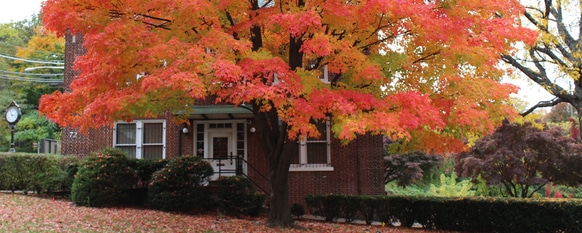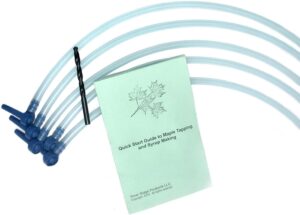The sugar maple is one of the most important hardwood trees in the United States and Canada. So much so that it is Canada’s national tree and adorns the Canadian flag.
It was an invaluable tree for Native Americans, who used it not only for timber but also for medicinal purposes. Its sap, best known as maple syrup, was used for bartering.
Even today, they support an entire cottage industry with timber and syrup.
They are wonderful shade trees, and in the fall, the beautifully shaped leaves turn all shades of yellow, orange, and red.
Overall, this tree is easy to handle and grow. But if you’re thinking of planting one on your property, there are some things that you should know beforehand. Fortunately for you, all of the necessary details can be found right here. So read through and learn all that you must know before adding one of these trees to your landscape.

General Information
The sugar maple (Acer saccharum) is native to North America. Its native range runs from Southeast Canada through New England along the Eastern seaboard down to Georgia and as far west as Minnesota. The species covers more than 31 million acres of land and produces 6% of the hardwood saw timber in the United States.
They are also known as rock maple, sugar tree, bird’s-eye maple, sweet maple, curly maple, and hard maple.
Sugar maples are large deciduous trees that form a beautiful crown. On a domestic landscape, they will grow to between 60 and 75 feet tall. In the wild, however, they grow much taller. In their native environment, they will average between 80 and 115 feet, and on rare occasions, will be as tall as 150 feet. A forest-grown maple forms a much taller trunk and a narrower canopy with a spread between 60 and 80 feet.
The intensely dark green leaf grows to be up to 10 inches long and wide. It is palmate, possesses five lobes, and is borne in opposite pairs.

While the it is young, the bark is remarkably smooth. It becomes shaggy as it matures. It has a straight, central trunk and wide, spreading branches. The branches spread upward and create a pointed crown that makes it a wonderful shade tree, especially when it boasts its autumn foliage.
The sugar maple is adapted to regions with a cool, moist climate in hardiness zones 3 through 9. That being said, the temperatures in its natural range can vary from -25℉ in the northeast to 100℉ in the south. The tree can withstand occasional extreme temperatures.
Early on, the species grows slowly, partly because it regenerates under heavy shade in forest environments. The younger seedlings are sensitive to surface moisture conditions because they have a shallow, fibrous root system early in life. With gradual increases in light, the root systems will penetrate deeper into the mineral soil and vertical growth will increase.
For the first 30 or 40 years of its life, the hardwood will grow around 1 foot in height per year. The growth rate of the diameter is exceedingly slow, only averaging 3 to 4 inches every ten years. Mature specimens can grow to be between 300 and 400 years old.
Care Guide
Sunlight Requirements
Ideally, the species will grow in conditions of either full sun or partial sun. To break that down a bit, optimal conditions for healthy growth require at least 4 hours of direct, unfiltered sunlight.
That being said, it is rated as very tolerant of shade; it is exceeded by only a few smaller and short-lived species of hardwoods. Because of the overwhelming shade conditions for saplings in a forest environment, they have adapted to grow well in the shade.
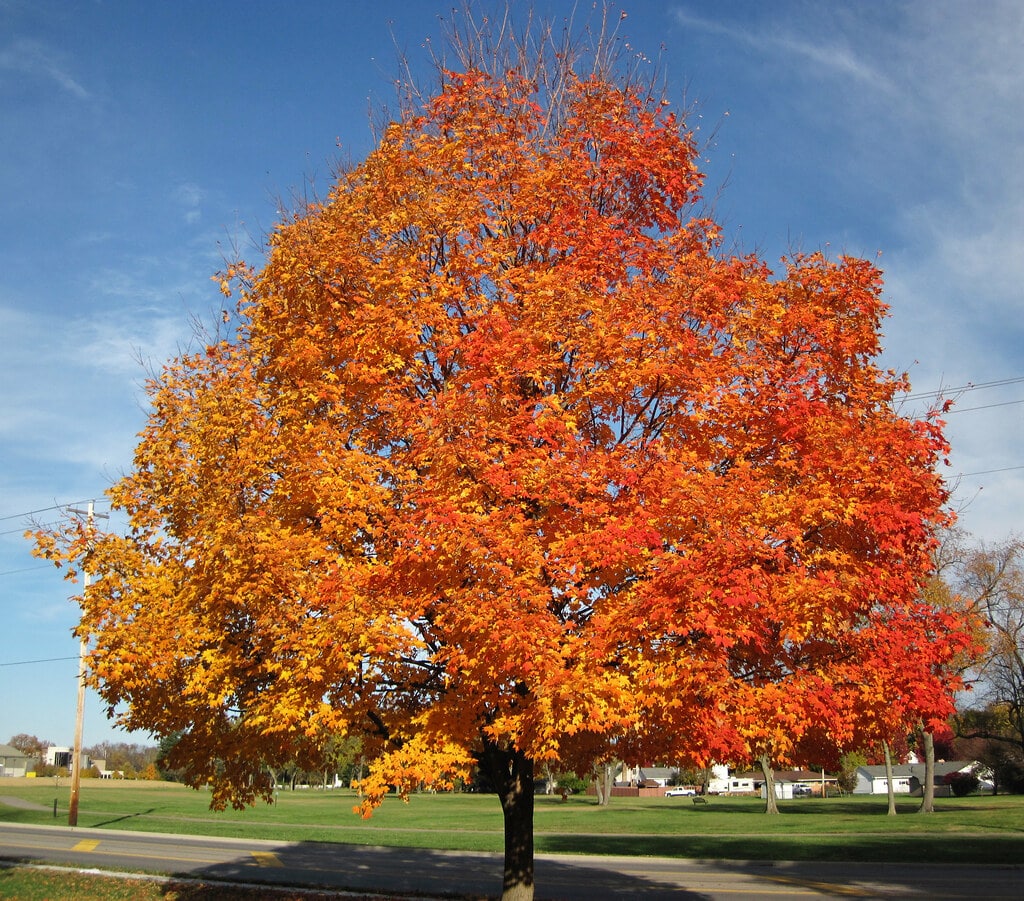
Water Requirements
When you first plant a sugar maple, make sure you water the sapling deeply. Then, it requires two watering sessions per week until its root system is established. The amount of water will vary depending on the growth rate and overall size. A good rule of thumb is to start with a baseline of 5 gallons of water and add 5 gallons for each inch of trunk diameter measured 4 feet off of the ground.
Once established, your hardwood will not require supplemental irrigation if it receives 1 inch of water per week. Anything less than that, and you’ll need to make up the difference.
You may run into difficulty gauging whether larger specimens are receiving enough water. If you run into this problem, take the time to look around and see what the plant and the soil are telling you. Look for leaf litter on the ground too early in the year or for leaf scorch on the fallen leaves. These are signs of water deficiency.
You can check the soil in one of two ways:
- Dig a 3- to 6-inch hole into the root zone 18 to 24 inches away from the trunk. If you find the soil in the hole at that depth dry to the touch, then watering is necessary.
- Insert a rod into the root mass. If you meet resistance a few inches into your effort, then watering is needed. If the rod slides all the way easily through, then your water levels are in good shape.
This species benefits most from even watering over the entirety of the root zone. The root zone extends just beyond the furthest tip of the branches. To aid in helping the soil retain moisture, spread a 2- to 3-inch layer of organic mulch over the root area but not in direct contact with the base.

Soil Conditions
Sugar maples can be picky when it comes to soil conditions, but they can exhibit healthy growth in a wide variety of earth. The optimal pH level is between 5.5 to 7.3. That being said, it will grow in very acidic soils with a pH level as low as 3.7.
The Acer saccharum also grows on sandy soil, loamy sands, sandy loams, loams, and silt loams. However, it does best on well-drained loamy soil. It does not perform well on poorly drained, shallow, and dry soils. Although the natural range does extend through moisture-rich climates, it is rarely, if ever, found in swamp-like environments.
Fertilization
Generally, they do not require much fertilization. The species is hearty and does receive nutrients from the enormous amount of leaf debris it produces.
If you find that your soil lacks nutrients, you can add supplemental nourishment, particularly if your tree is still a sapling. Also, if you notice that the its annual growth is less than 2 inches, then you probably need to give it a nutrient boost.
If you find that fertilization is necessary, perform a soil test to determine the nutrient content. Slow growth indicates a nitrogen deficiency, so choose a slow-release nitrogen-rich product. If the pH level is higher than 7.3, consider using a slow-release product with ammonium sulfate to lower the pH level. If you notice yellowing of the leaves, that could be a sign of a manganese deficiency. In that case, a slow-release, well-balanced fertilizer with many additional filler nutrients is best.
Give the root zone a good dousing with 2 to 3 inches of water before and after applying your chosen fertilizer. If you notice that it is still not growing robustly, consider applying fertilizer once per month during the growing season until you remedy the problem.
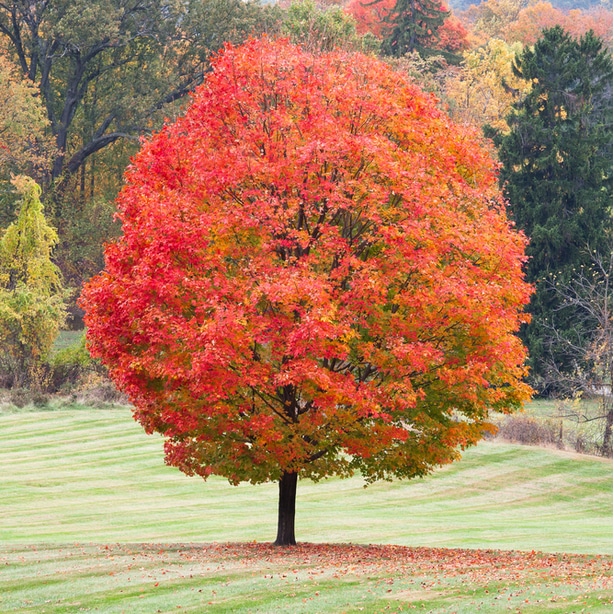
Growing Tips
Pruning
You should only prune your sugar maple if the branches are colliding with a hardscape object or if they are diseased, damaged, or dying. If you find the branches need to be pruned, only do so at the end of summer or in the fall to avoid issues with bleeding sap.
To make your job easier, consider a cordless electric pruner.
Tapping
For optimal amounts of sap, the weather has to be cold. Trees growing in the lower native range do not produce nearly as much sap as those growing in areas with cold winters. Tapping is done through the winter and into very early spring before fresh growth arrives on the limbs.
You should never tap your sugar maple once it sprouts spring buds. At that point, the plant is no longer producing sap at a high enough volume to make tapping feasible.
Depending on the diameter and circumference of the trunk, a single tree can have up to 3 taps at a time. An average tree can produce about 10 gallons per year. Keep in mind that it takes 40 to 50 gallons of sap to produce 1 gallon of maple syrup.
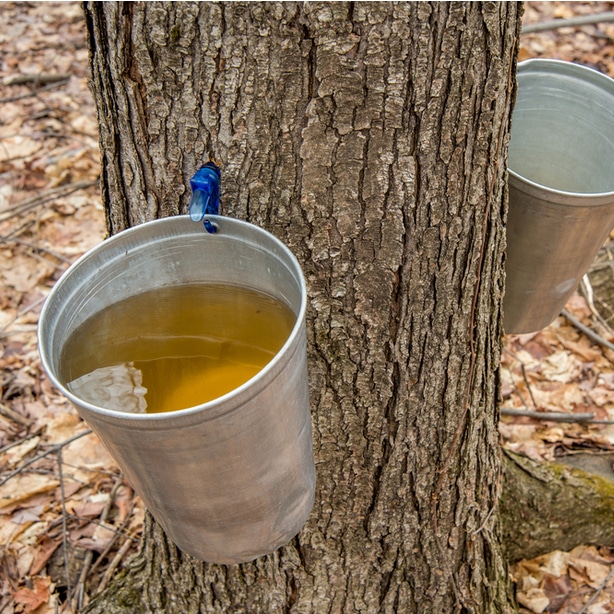
Problems, Pests, and Diseases
Bud Miners
There are two species of bud miners, Proteoteras moffatiana and Obrussa ochrefasciella, that overwinter in the terminal bud of the sugar maple and kill it. This causes repeated forking, which reduces the length of viable logs. It also adds to the risk of crown loss through splitting.
Wooly Alder Aphid
Wooly alder aphids will injure leaves and reduce growth. Some experts prefer keeping these insects alone because the damage they produce is relatively minimal and they may act as a beneficial insect for biological control of other insects.
Diseases
Diseases generally deform, discolor, or decrease the overall volume but rarely wind up killing the tree. The two most significant diseases are the Eutypella and Nectria cankers. These cankers affect between 1% and 4% of all trees in a stand. They tend to take hold after cutting and pruning has been done, and wounds are open and easily infected.
Fungal Disease
The Armillaria mellea is a root-rotting fungus that will also cause a white, soft, and spongy heart rot.
Wilts
Wilt called Sapstreak can attack and kill your hardwood. It will enter through root injuries from logging and cultivation and is mainly concentrated in areas with a great deal of shade.

